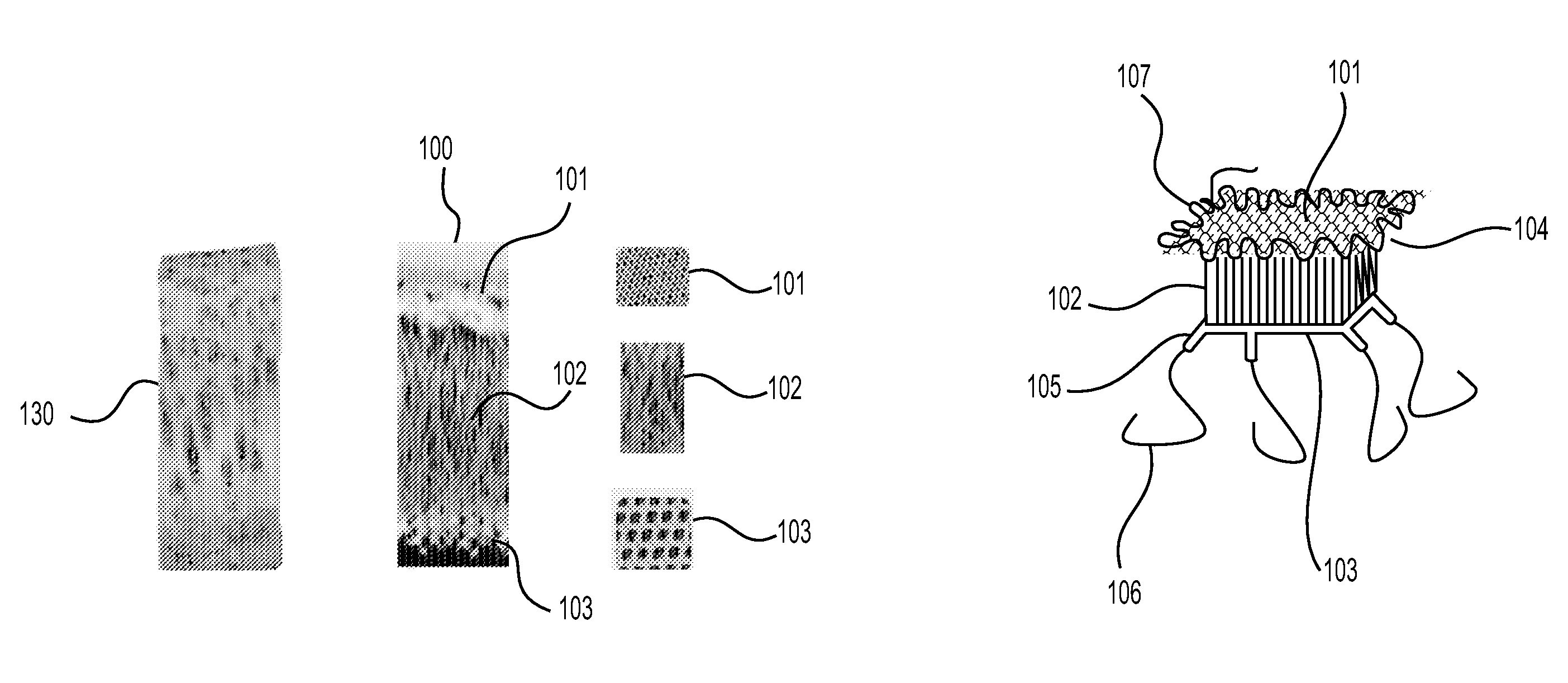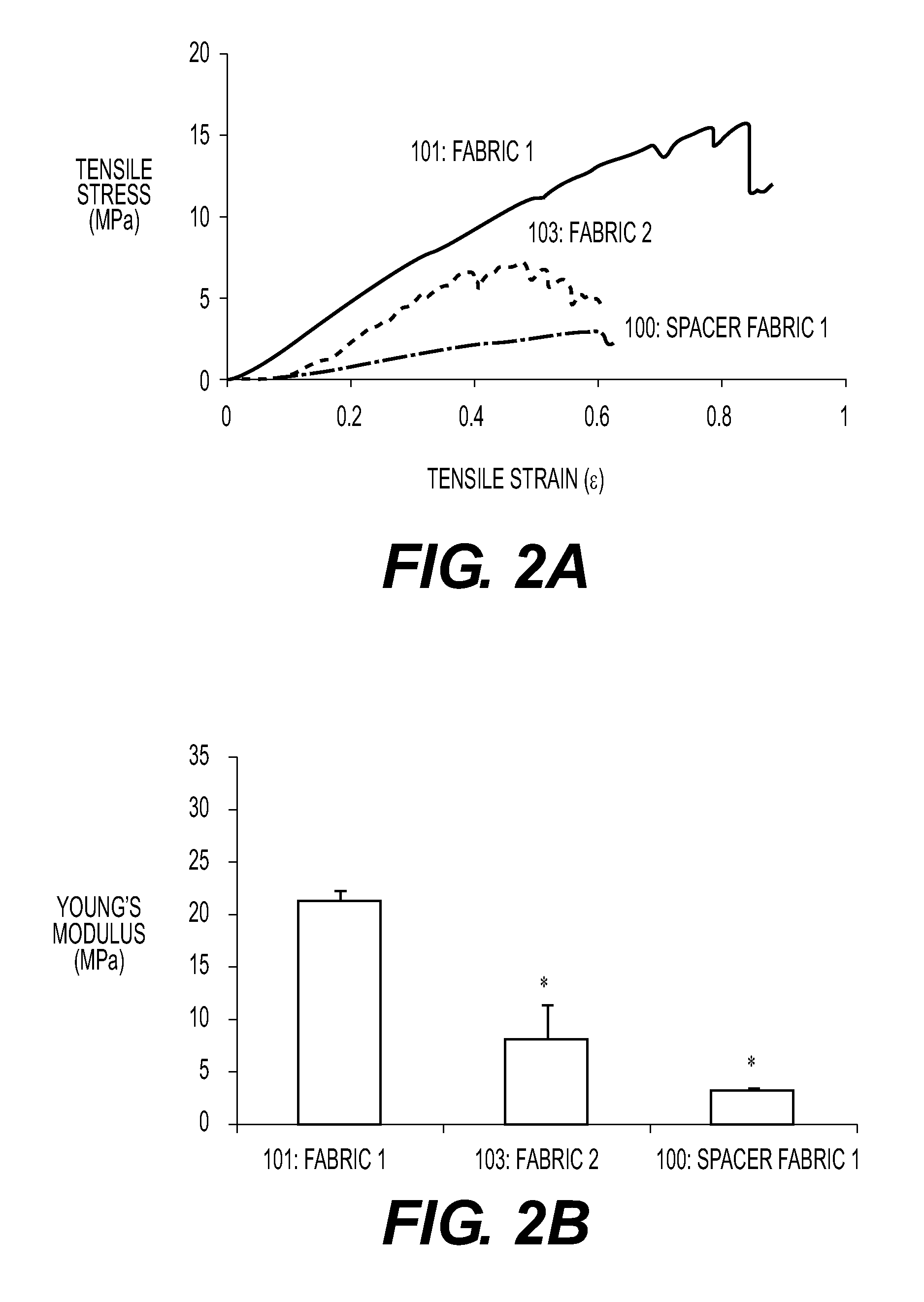Implantable devices for musculoskeletal repair and regeneration
a technology of applied in the field of implantable devices for musculoskeletal repair and regeneration, can solve the problems of cartilage lacking the intrinsic regenerative capacity for repair, significant challenges in tissue defects resulting from trauma and degeneration, and forming tears and/or lesions
- Summary
- Abstract
- Description
- Claims
- Application Information
AI Technical Summary
Benefits of technology
Problems solved by technology
Method used
Image
Examples
embodiments of invention
Embodiment 1
An implantable device for the replacement or repair of musculoskeletal tissue, comprising:
a first fabric,
a second fabric,
and a plurality of spacer elements connecting the first fabric to the second fabric, wherein the first fabric and the second fabric define an interfabric space.
embodiment 2
The implantable device of embodiment 1, wherein the first fabric and second fabric are substantially planar and substantially parallel.
embodiment 3
The implantable device of any of embodiments 1-2, wherein the first fabric, the second fabric, or both, are formed by weaving, knitting, or a combination thereof
PUM
 Login to View More
Login to View More Abstract
Description
Claims
Application Information
 Login to View More
Login to View More - R&D
- Intellectual Property
- Life Sciences
- Materials
- Tech Scout
- Unparalleled Data Quality
- Higher Quality Content
- 60% Fewer Hallucinations
Browse by: Latest US Patents, China's latest patents, Technical Efficacy Thesaurus, Application Domain, Technology Topic, Popular Technical Reports.
© 2025 PatSnap. All rights reserved.Legal|Privacy policy|Modern Slavery Act Transparency Statement|Sitemap|About US| Contact US: help@patsnap.com



